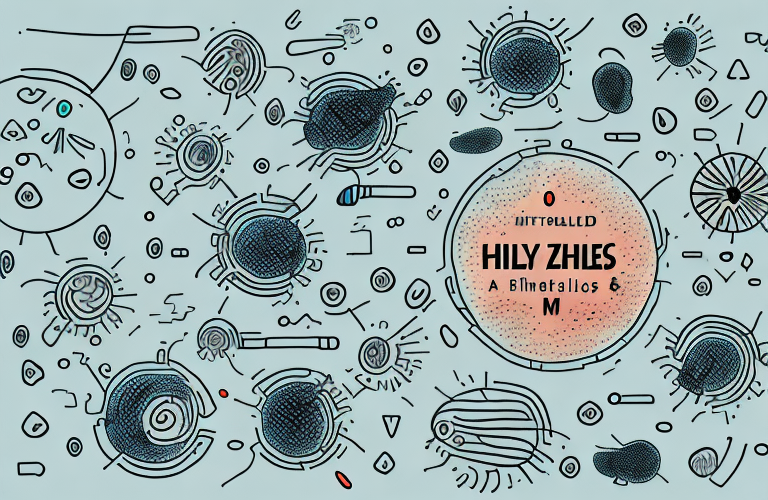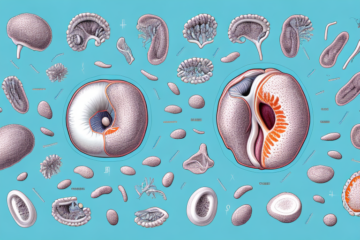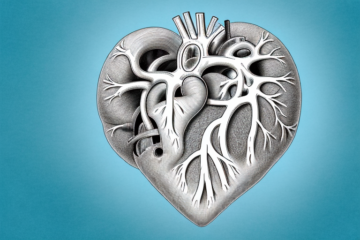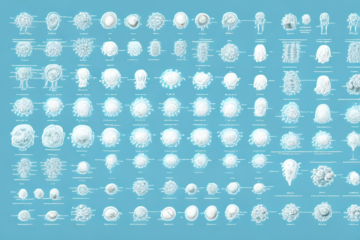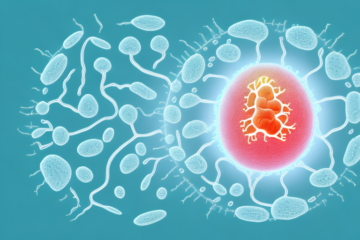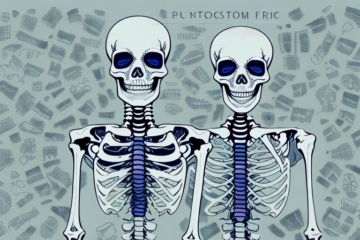Hypocomplementemic Urticarial Vasculitic Syndrome, or HUVS, is a rare autoimmune disorder that affects the blood vessels and leads to inflammation in various parts of the body. HUVS occurs when the body’s immune system mistakenly attacks healthy tissues, causing damage to blood vessels and resulting in a host of symptoms that can be both painful and debilitating. In this article, we’ll look at the causes, symptoms, diagnosis, and treatment options for HUVS, as well as offer some advice on living with the condition.
Understanding Hypocomplementemic Urticarial Vasculitic Syndrome
Hypocomplementemic Urticarial Vasculitic Syndrome is characterized by inflammation of the small blood vessels that supply the skin, joints, and other organ systems. The condition is often associated with low levels of complement, a group of proteins that help the immune system to fight off infections. When complement levels are low, the immune system is less able to defend against invaders, which can lead to the development of autoimmune disorders like HUVS.
One of the most common symptoms of HUVS is the development of hives or urticaria, which can be extremely itchy and uncomfortable. These hives may appear suddenly and disappear just as quickly, making it difficult to diagnose the condition. In addition to hives, patients with HUVS may also experience joint pain, swelling, and stiffness, as well as abdominal pain, nausea, and vomiting.
While the exact cause of HUVS is not yet known, researchers believe that a combination of genetic and environmental factors may play a role in its development. Some studies have suggested that certain medications, infections, and exposure to ultraviolet light may trigger the onset of HUVS in susceptible individuals. Treatment for HUVS typically involves the use of immunosuppressive medications to reduce inflammation and prevent further damage to affected organs.
The Prevalence of Hypocomplementemic Urticarial Vasculitic Syndrome
HUVS is a rare condition, with an estimated prevalence of less than one case per million people. The condition is more common in women than men, and it typically affects people between the ages of 20 and 50. While the exact cause of HUVS is not fully understood, researchers believe that a combination of genetic and environmental factors may play a role in the development of the condition.
Recent studies have shown that HUVS may be associated with other autoimmune diseases, such as lupus and rheumatoid arthritis. Patients with HUVS may also experience symptoms such as joint pain, fever, and abdominal pain. Treatment for HUVS typically involves the use of immunosuppressive medications, such as corticosteroids and cyclophosphamide, to reduce inflammation and prevent further damage to the affected organs.
What Causes Hypocomplementemic Urticarial Vasculitic Syndrome?
Researchers believe that Hypocomplementemic Urticarial Vasculitic Syndrome may be caused by a combination of genetic and environmental factors. Some studies suggest that a genetic mutation may be responsible for the development of HUVS in some individuals, while others have linked the condition to exposure to certain medications, infections, or other environmental triggers. There is also evidence to suggest that HUVS may be associated with other autoimmune disorders, such as lupus or rheumatoid arthritis.
Additionally, recent research has shown that HUVS may also be linked to abnormalities in the complement system, which is a group of proteins that play a role in the body’s immune response. Specifically, individuals with HUVS may have lower levels of complement proteins, which can lead to inflammation and damage to blood vessels and tissues. This new understanding of the role of the complement system in HUVS may lead to more targeted and effective treatments for the condition in the future.
Symptoms of Hypocomplementemic Urticarial Vasculitic Syndrome You Should Know
Hypocomplementemic Urticarial Vasculitic Syndrome can cause a wide range of symptoms, including skin rashes, joint pain, abdominal pain, and muscle weakness. Other common symptoms of HUVS include fatigue, fever, and weight loss. In some cases, HUVS can also lead to more serious complications, such as kidney damage or nerve damage.
It is important to note that the severity and frequency of symptoms can vary greatly from person to person. Some individuals may experience mild symptoms that come and go, while others may have more persistent and severe symptoms. Additionally, certain triggers, such as exposure to sunlight or certain medications, may worsen symptoms in some individuals.
If you suspect that you may have HUVS, it is important to seek medical attention promptly. A healthcare provider can perform a physical exam, order blood tests, and recommend appropriate treatment options based on your individual symptoms and medical history. With proper management and care, many individuals with HUVS are able to effectively manage their symptoms and prevent complications.
Diagnosis of Hypocomplementemic Urticarial Vasculitic Syndrome: Tests and Procedures
Diagnosing Hypocomplementemic Urticarial Vasculitic Syndrome can be a challenging process, as the condition shares many symptoms with other autoimmune disorders. Healthcare professionals typically use a combination of blood tests, imaging studies, and biopsies to confirm a diagnosis of HUVS. These tests can help detect inflammation in the blood vessels and may also reveal low levels of complement or other immune system abnormalities.
One of the blood tests commonly used to diagnose HUVS is the C3 and C4 complement test. This test measures the levels of complement proteins in the blood, which are essential components of the immune system. Low levels of complement proteins can indicate an autoimmune disorder, such as HUVS.
In addition to blood tests, imaging studies such as ultrasound, CT scans, or MRI may be used to detect inflammation in the blood vessels. A skin biopsy may also be performed to examine the affected tissue and confirm a diagnosis of HUVS.
Treatment Options for Hypocomplementemic Urticarial Vasculitic Syndrome
There is no cure for Hypocomplementemic Urticarial Vasculitic Syndrome, but there are a variety of treatment options available to manage the symptoms of the condition. Healthcare professionals may prescribe medications to suppress the immune system and reduce inflammation, such as corticosteroids or immunosuppressants. In addition, lifestyle changes, such as avoiding triggers like certain medications or foods, may also be helpful in managing the symptoms of HUVS.
Another treatment option for HUVS is plasmapheresis, which involves removing the patient’s blood plasma and replacing it with a substitute solution. This can help remove the antibodies that are causing the inflammation and symptoms of the condition. However, plasmapheresis is typically only used in severe cases of HUVS.
In some cases, HUVS may be associated with an underlying autoimmune disease, such as lupus or rheumatoid arthritis. In these cases, treating the underlying condition may also help manage the symptoms of HUVS. Healthcare professionals may also recommend regular monitoring and follow-up appointments to track the progression of the condition and adjust treatment as needed.
Medications Used for Treating Hypocomplementemic Urticarial Vasculitic Syndrome
Medications used for treating Hypocomplementemic Urticarial Vasculitic Syndrome include corticosteroids, immunosuppressants, and biologic therapies. Corticosteroids like prednisone can help reduce inflammation and relieve symptoms of HUVS. Immunosuppressants, such as azathioprine or mycophenolate, can also be used to suppress the immune system and reduce inflammation. Biologic therapies, such as rituximab, may also be used to target specific immune cells involved in the development of HUVS.
It is important to note that the choice of medication and dosage may vary depending on the severity of the condition and the individual’s response to treatment. In some cases, a combination of medications may be necessary to effectively manage HUVS. It is also important for individuals with HUVS to regularly monitor their symptoms and report any changes to their healthcare provider to ensure proper management of the condition.
How to Manage the Symptoms of Hypocomplementemic Urticarial Vasculitic Syndrome at Home
There are several steps that individuals with Hypocomplementemic Urticarial Vasculitic Syndrome can take at home to manage their symptoms and improve their quality of life. These may include eating a healthy diet, getting regular exercise, avoiding known triggers, and reducing stress. It may also be helpful to work closely with a healthcare professional to develop a personalized treatment plan and monitor the progression of the condition over time.
In addition to these lifestyle changes, there are also certain medications that may be prescribed to help manage the symptoms of Hypocomplementemic Urticarial Vasculitic Syndrome. These may include nonsteroidal anti-inflammatory drugs (NSAIDs), corticosteroids, and immunosuppressants. It is important to follow the prescribed medication regimen and communicate any concerns or side effects with a healthcare professional.
Living with Hypocomplementemic Urticarial Vasculitic Syndrome: Coping Strategies and Support Resources
Living with Hypocomplementemic Urticarial Vasculitic Syndrome can be challenging, and it’s important to develop effective coping strategies and seek out support resources. Support groups, online forums, and counseling services can all be helpful in managing the emotional and psychological impact of the condition. In addition, it may be helpful to develop a strong support network of family members, friends, and healthcare professionals who are knowledgeable about the condition and can provide ongoing support and guidance.
One coping strategy that may be helpful for individuals with Hypocomplementemic Urticarial Vasculitic Syndrome is to practice stress-reducing activities such as meditation, yoga, or deep breathing exercises. These activities can help to reduce anxiety and promote relaxation, which can be beneficial in managing symptoms of the condition.
It’s also important for individuals with Hypocomplementemic Urticarial Vasculitic Syndrome to prioritize self-care and maintain a healthy lifestyle. This may include getting regular exercise, eating a balanced diet, and getting enough sleep. These healthy habits can help to boost overall well-being and may also help to reduce the severity of symptoms associated with the condition.
Potential Complications of Hypocomplementemic Urticarial Vasculitic Syndrome and How to Prevent Them
Hypocomplementemic Urticarial Vasculitic Syndrome can lead to a range of potential complications, including kidney damage, nerve damage, and organ failure. To prevent these complications, it’s important to seek out regular medical care and monitoring, and to actively manage the symptoms of the condition. This may include taking medications as prescribed, adhering to a healthy lifestyle, and staying informed about new developments in HUVS research and treatment.
One potential complication of HUVS is the development of blood clots, which can lead to serious health problems such as stroke or heart attack. To prevent blood clots, doctors may recommend blood thinning medications or lifestyle changes such as regular exercise and a healthy diet.
Another potential complication of HUVS is the development of skin ulcers, which can be painful and difficult to treat. To prevent skin ulcers, it’s important to avoid injury to the skin and to keep the affected areas clean and moisturized. In some cases, doctors may recommend topical or oral medications to help heal the ulcers.
Future Directions in Research on Hypocomplementemic Urticarial Vasculitic Syndrome
Research on Hypocomplementemic Urticarial Vasculitic Syndrome is ongoing, and there is much that is still not fully understood about the condition. Some areas of focus in current research include identifying genetic mutations associated with HUVS, improving diagnostic tools, and developing new treatments for the condition. As research continues, it’s hoped that new insights and breakthroughs will emerge that will help to improve the lives of individuals affected by HUVS.
One area of research that is gaining attention is the role of the immune system in the development of HUVS. Researchers are investigating how the immune system responds to certain triggers, such as infections or medications, and how this response may contribute to the development of HUVS. Understanding the immune system’s role in HUVS could lead to new treatment options that target the underlying immune dysfunction.
Another area of research is focused on improving the management of HUVS symptoms. While there are currently treatments available to manage symptoms such as skin rash and joint pain, these treatments are not always effective for all patients. Researchers are exploring new treatment options, such as biologic therapies, that may provide more targeted and effective symptom relief for individuals with HUVS.

